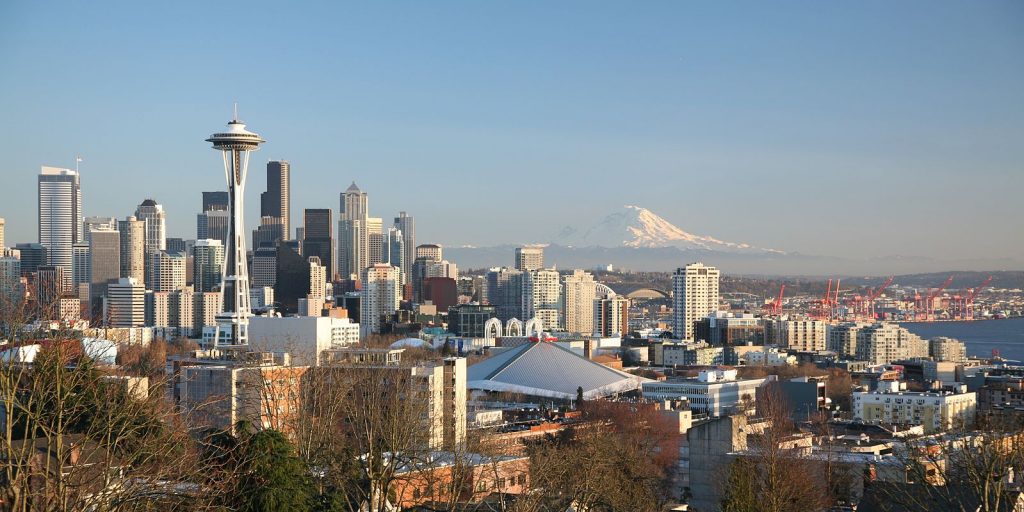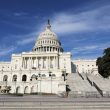Infrastructure highlighted by city leaders as top priority in analysis of 60 mayoral addresses
After two years of ping-pong lockdown orders, mask mandates, unprecedented vaccine drives and economic uncertainty, cities across the United States are beginning to emerge in the pandemic’s aftermath, and they’re prioritizing infrastructure, according to a report published Wednesday by the National League of Cities (NLC).
“The new normal, as we now understand it, is here,” said Clarence Anthony, executive director of the cities league in an address during a webinar announcement of the advocacy organization’s annual “State of the Cities 2022” report. The findings “make it clear that our local leaders are finally reaping the benefits of those hard-won projects.”
Of 10 priorities that’ve been tracked in the report since its inaugural publication nine years ago, infrastructure was mentioned most often as the top area of focus in the coming year by 60 city leaders in mayoral speeches delivered between last October and April 2022. This isn’t particularly surprising given the unprecedented amount of federal dollars poised for delivery to local governments via the American Rescue Plan Act and the Bipartisan Infrastructure Law.
“Cities are reopening and rebuilding,” said Farhad Kaab Omeyr, Ph. D., program director of NLC’s center for city solutions and a co-author of the report along with Erica Grabowski, Jacob Gottlieb and Brooks Rainwater. “Our cities are ready to get to work. In 2022, the state of American cities is strong.”
Coordinating funding, building water, waste and sewer infrastructure, and roadway and transportation projects were among the most frequently touched on infrastructure-related topics in the speeches analyzed, according to the report.
“The historic passage of the (Bipartisan Infrastructure Law) also put maintenance and renovation in the spotlight, as more and more cities start to use federal and state grants and capital funds to address their long overdue maintenance obligations and demands,” the report reads. “Emphasizing the importance of maintenance and renovation on job creation and economic development, Detroit Mayor Mike Duggan announced in his 2022 annual address that the city will rebuild abandoned fairgrounds into a new Amazon distribution center (a $400 million project) that will bring about 200 jobs to the city.”
And as they go about expending their federal allotments to bounce back from the pandemic, Omeyr said, “America’s mayors are laser focused on creating equitable outcomes for their residents, and using the tolls and resources that are available to make this happen.”
In Easthampton, Mass., for example, Mayor Nicole LaChapelle said her city of around 16,000 people has integrated racial equity training into the framework of government and economic recovery.
“The biggest pivot was from the word ‘welcome’ to ‘equitable,’” LaChapelle said, noting the city invited a team from the Department of Justice to host racial equity training for municipal employees, and created a community relations committee that’s created connections between department heads and constituents. “It got the police involved and the fire involved, because there was a structure they could understand.”
Like LaChapelle, who was speaking on a panel during the webinar, Mayor Victoria Woodards of Tacoma, Wash. said her community of about 225,000 people has greatly increased its focus on racial equity since George Floyd was killed while in police custody in 2020, especially within government.
“We know that a lot of these structural systems we work in weren’t designed for everyone in our community—especially in our police departments,” Woodwards said. As an African American woman, “There are times that city hall works against me, as mayor. … We’ve experienced our own set of issues right in Tacoma. We need to acknowledge the harm our institutions have done.”
Among recent steps her administration has taken to help create equity in government, Woodwards said Tacoma invited two Black community members to sit in on bargaining negotiations between the city and the police union. Besides giving police officers a chance to directly speak to community members, the initiative has given residents a direct window into the inner workings of government—shedding light on the daily expenses associated with public safety, and the increased costs that come with implementing equitable solutions like enhanced data collection, body cameras and bias training.
“We are using this framework for really engaging with our community and our police department,” Woodwards said, noting a greater community-police connection over the last few years. While promoting equity, the approach also “contributes to higher solvability rates, fewer acts of violence. … We see it as a way to prevent violence.”
Behind infrastructure, which was prominently highlighted in 36 percent of the speeches analyzed, economic development was highlighted in 33 percent of speeches, followed by budgets and management (23 percent), public safety (18 percent), health and human services (10 percent), housing (5 percent), data and technology (3 percent), energy and the environment (3 percent), demographics (3 percent) and education (2 percent).
In their focus on economic development—following a difficult two years—mayors cited common strategies, including “investments in downtown development and commercial real estate projects; community development initiatives and programs to support entrepreneurs, new business and business expansion,” the report says.
LaChapelle noted her administration has focused over the last year in promoting minority-owned businesses—and their efforts are paying off. Of the 27 or so new businesses that opened their doors during the pandemic, 19 of them were women or minority-owned.
“We’re talking about small, little business by small, little business—and we’re supporting them. Every city wins when they stand where they are, and (don’t) try to be someone else,” LaChapelle said.
For more information and to view the report, visit the National League of City’s website.




















